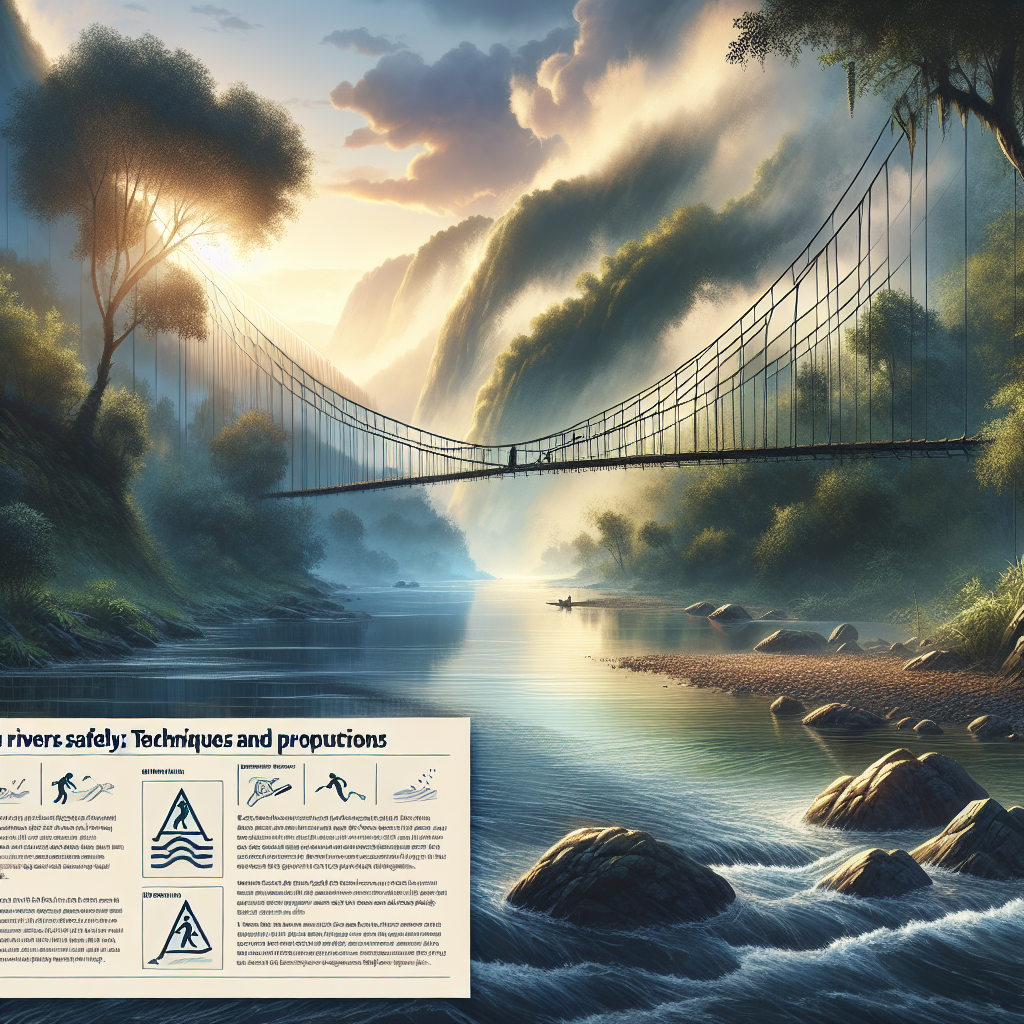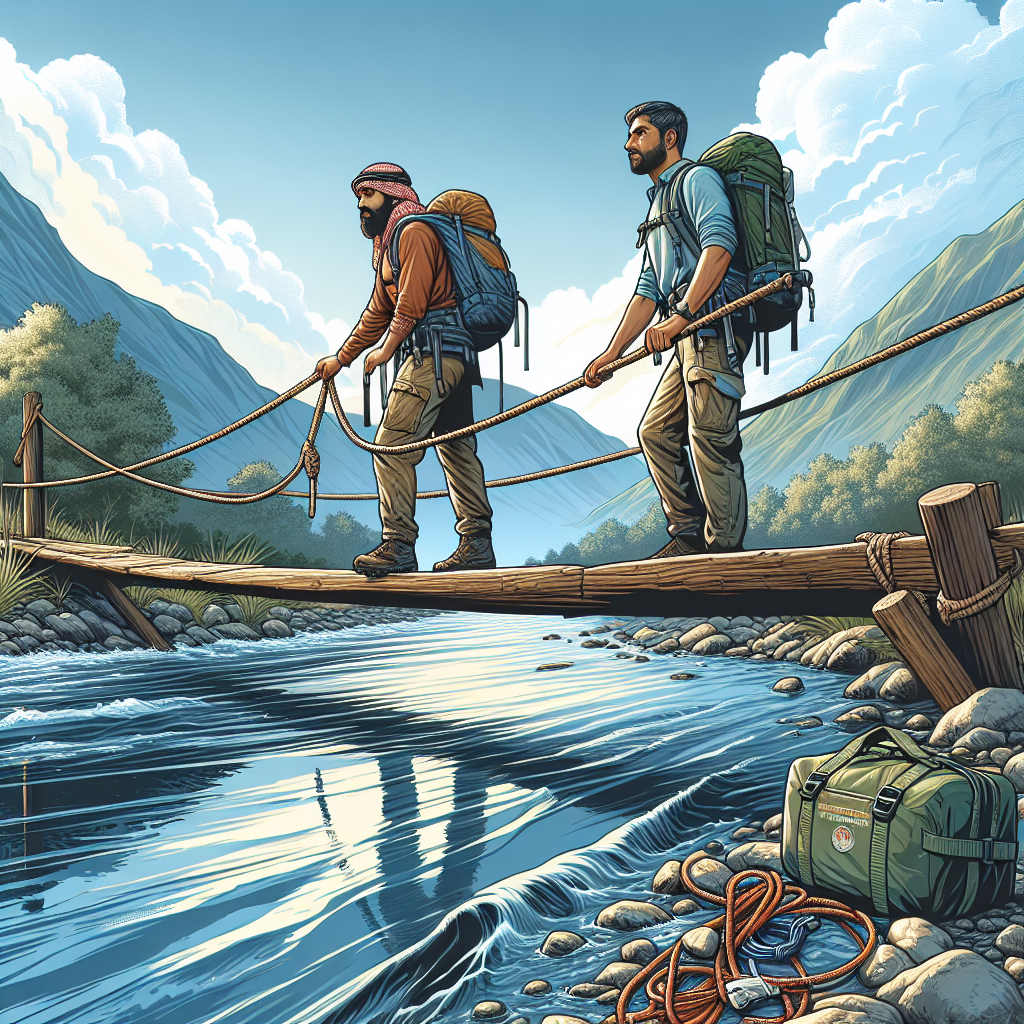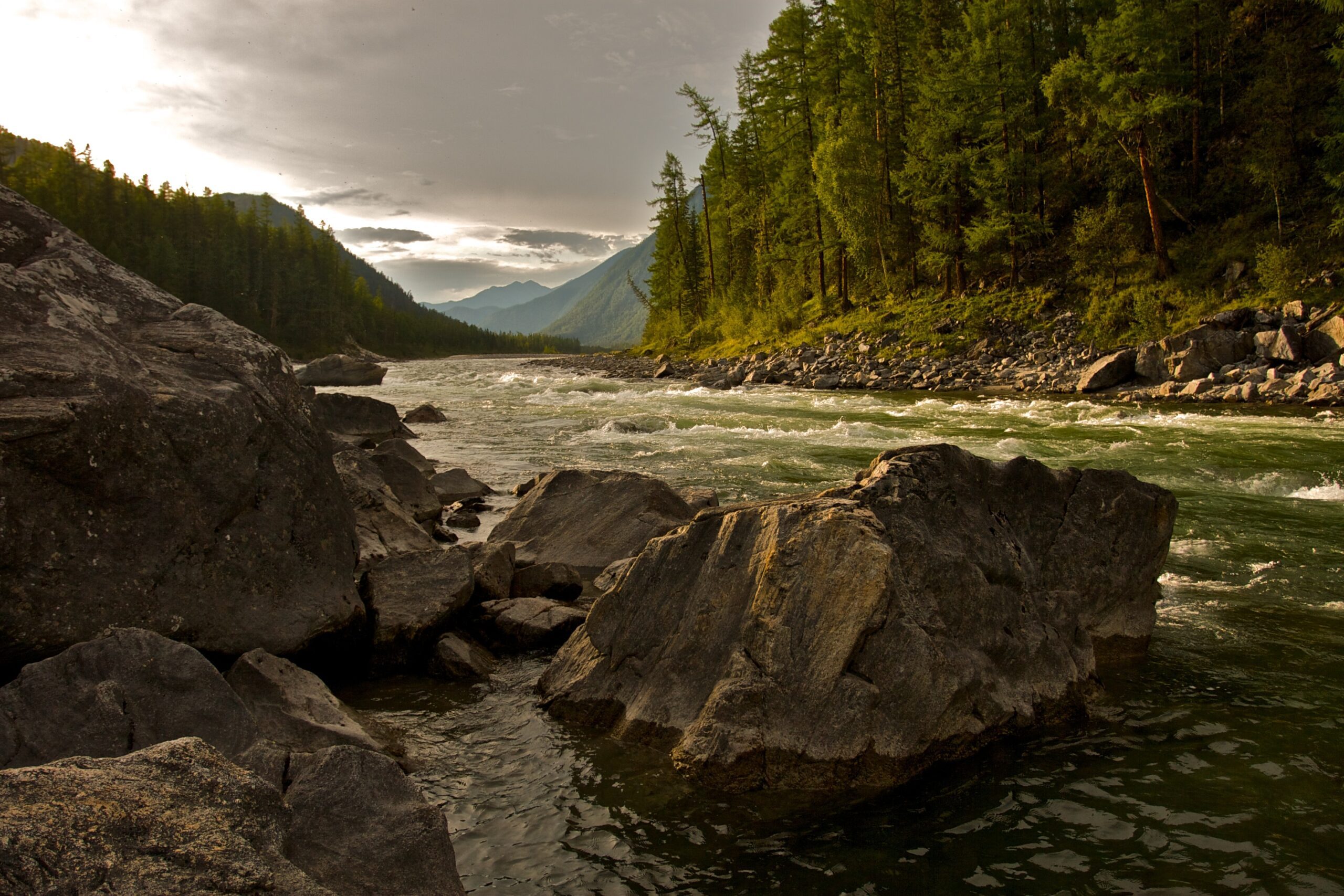Imagine standing at the edge of a rushing river, the water roaring and cascading over rocks, as you contemplate how to safely navigate across to the other side. In this article, you will discover essential techniques and precautions for crossing rivers without putting yourself in harm’s way. Whether you’re an adventurous hiker, a survival enthusiast, or simply find yourself facing a river crossing during your outdoor adventures, this guide will provide you with valuable tips to ensure you cross rivers with confidence and precision.
Factors to Consider Before Crossing a River
When it comes to crossing a river, there are several key factors that you should take into consideration in order to ensure your safety. These factors include the current weather conditions, the depth and speed of the water, the composition of the riverbed, and the presence of any potential hazards.
Weather Conditions
Before attempting to cross a river, it’s crucial to assess the current weather conditions. Bad weather can greatly increase the risk and difficulty of crossing. Heavy rainfall can cause rivers to rise rapidly, making them more dangerous to cross. Additionally, thunderstorms with lightning can pose a significant threat. It’s important to check the local weather forecast and avoid crossing during inclement weather.
Water Depth and Speed
The depth and speed of the water are critical factors to consider before attempting to cross a river. It’s essential to determine if the water is shallow enough to wade through or if it requires swimming. If the water is too deep or the current is too strong, it may be impossible or extremely dangerous to cross. It’s always better to err on the side of caution and find an alternative, safer route if necessary.
Riverbed Composition
Understanding the composition of the riverbed is important for a successful river crossing. Rivers with sandy, muddy, or rocky bottoms can affect your footing and stability while crossing. Sandy or muddy riverbeds can make it harder to gain traction, while rocky or uneven terrain can increase the risk of slipping and falling. Take note of the riverbed’s composition to anticipate any difficulties and adjust your technique accordingly.
Presence of Hazards
Identifying potential hazards in and around the river is crucial for a safe crossing. Pay attention to any obstacles such as fallen trees, large rocks, or debris that may impede your progress or pose a risk to your safety. Additionally, be wary of any wildlife that may inhabit the area, as some species could be dangerous or territorial. By scanning your surroundings and anticipating hazards, you can make a well-informed decision about whether or not to proceed with the crossing.

Techniques for Crossing Rivers Safely
Once you have carefully considered the factors mentioned above, it’s time to learn the essential techniques for safely crossing rivers. These techniques will help improve your balance, stability, and overall safety during the crossing.
Choose the Right Crossing Point
Selecting the right crossing point is vital for a successful river crossing. Look for areas with a wider span, where the water is calmer and shallower. Avoid crossing at bends or areas with fast-flowing water, as these can present higher risks. Sometimes, it may be necessary to walk a short distance upstream or downstream to find a suitable spot to cross.
Remove Loose Clothing and Gear
To minimize the risk of getting weighed down or caught on objects underwater, it’s important to remove any loose clothing and gear before crossing. Items such as backpacks, jackets, or heavy equipment can throw off your balance or become entangled in underwater hazards. By removing unnecessary items, you ensure greater freedom of movement and reduce the chance of accidents.
Maintain Three Points of Contact
When crossing a river, it’s best to maintain three points of contact with the ground at all times. This means keeping two feet securely planted while using a walking stick or trekking pole for additional stability. By having three points of contact, you decrease the chances of slipping or losing your balance, even in swiftly flowing water.
Use a Walking Stick or Trekking Pole
Having a walking stick or trekking pole can be tremendously helpful when crossing a river. It acts as an extra point of contact with the ground, providing stability and helping you feel the depth of the water. The stick can also be used to probe the riverbed for hidden obstacles and to assist you in navigating through uneven terrain.
Use a Rope for Extra Support
In more challenging river crossings, it is wise to utilize a rope for extra support. A rope can be stretched across the river, anchored to secure points on either side. By holding onto the rope while crossing, you can help maintain your balance and stability. Additionally, the presence of a rope can provide peace of mind and serve as a lifeline in case of an emergency.
Use the Side-Step Technique
One of the most effective techniques for crossing a river is the side-step technique. Instead of facing directly upstream, turn sideways and take small forward steps perpendicular to the current. This technique reduces the force of the water against your body and helps maintain your stability. Take your time and move at a steady pace to ensure a safe and successful crossing.
Move Slowly and Steadily
When crossing a river, it’s important to move slowly and steadily. Rushing can lead to mistakes, such as losing your footing or misjudging the depth of the water. Take your time, carefully placing your feet, and maintain a steady pace throughout the crossing. This deliberate approach will help minimize the risk of accidents and ensure a safe passage to the other side.
Test the Stability of the Riverbed
Before committing to the crossing, it’s essential to test the stability of the riverbed. Probe the bottom of the river with a walking stick or trekking pole to assess the firmness and integrity of the ground beneath the water’s surface. If the riverbed feels unstable or soft, be cautious and consider finding an alternative crossing point or method.
Avoid Crossing Alone
Crossing a river alone can be extremely dangerous, even for experienced individuals. Whenever possible, it is advisable to cross with a partner or in a group. Crossing together allows for mutual assistance, such as offering stability, sharing knowledge, or providing help in case of an emergency. Having someone to watch your back significantly enhances the safety of the crossing.
Be Prepared for Emergency Situations
No matter how well you prepare, accidents can still happen. It’s crucial to be prepared for unexpected situations during a river crossing. Carry essential emergency gear, such as a first aid kit, a whistle, and a cellphone or satellite communication device. Familiarize yourself with local emergency procedures and inform someone about your plans, including your expected route and timeframe.

Precautions to Take While Crossing Rivers
Besides mastering the proper techniques, there are several precautions you should take to enhance your safety while crossing rivers.
Inform Others About Your Plans
Always inform someone trustworthy about your river crossing plans. Provide them with details about your intended route, estimated crossing time, and expected return time. In the event that you encounter any difficulties or fail to return as scheduled, this information will help authorities initiate a search and rescue operation promptly.
Wear Appropriate Footwear
Choosing appropriate footwear is vital for a safe and secure river crossing. Opt for lightweight shoes or sandals with good traction, designed specifically for wet conditions. Avoid heavy boots or shoes that can become waterlogged and impede your movement.
Wear a Personal Floatation Device
Wearing a personal floatation device (PFD) is an important safety measure, especially when crossing deeper or faster-moving rivers. A PFD provides buoyancy and support, minimizing the risk of drowning if you are swept off your feet. Make sure the PFD is properly fitted and always fasten its straps securely.
Use a Dry Bag for Electronics and Valuables
To protect any electronics or valuables you are carrying, it’s essential to use a waterproof dry bag. Securely store items such as phones, cameras, and wallets in the dry bag to prevent them from getting damaged or waterlogged during the river crossing.
Stay Hydrated and Take Breaks
Crossing a river can be physically demanding, so it’s important to stay hydrated and take regular breaks. Dehydration can lead to fatigue and impair your judgment, increasing the risk of accidents. Drink plenty of water and take breaks when needed to replenish your energy and rest your muscles.
Protect Yourself from the Sun
Riversides often offer little shade, making it crucial to protect yourself from the sun’s harmful rays. Apply sunscreen to exposed skin, wear a hat to shield your face and neck, and consider wearing lightweight, breathable clothing that provides UV protection.
Beware of Hypothermia
Even in warmer climates, crossing a cold river can pose the risk of hypothermia. Hypothermia occurs when your body loses heat faster than it can generate it, resulting in a dangerous drop in body temperature. To prevent hypothermia, dress appropriately for the water temperature and consider using a wetsuit or drysuit for added insulation.
Follow Local Regulations and Signs
Always adhere to local regulations and signs when crossing rivers. Some areas may have specific rules or restrictions for river crossings, especially in protected natural areas. Pay attention to any warning signs, closures, or advisories that may be in place to ensure you are in compliance and avoid unnecessary risks.
Follow the Leave No Trace Principles
When crossing rivers, it is important to minimize our impact on the environment and leave no trace behind. Follow the Leave No Trace principles, which include disposing of any waste properly, respecting wildlife and vegetation, and leaving natural features undisturbed. By practicing responsible outdoor ethics, we can help preserve these beautiful ecosystems for future generations.
Learn Basic First Aid Skills
Having basic first aid skills can be invaluable in case of accidents or injuries while crossing rivers. Sign up for a first aid course to learn essential skills such as CPR, wound management, and how to respond to emergency situations. Being prepared to administer first aid can make a critical difference in ensuring a positive outcome during unexpected circumstances.
In conclusion, crossing a river safely requires careful planning, proper techniques, and taking necessary precautions. Always consider the weather conditions, water depth and speed, riverbed composition, and the presence of hazards before attempting a river crossing. Master the techniques such as choosing the right crossing point, maintaining three points of contact, using a walking stick or trekking pole, and utilizing a rope for extra support. Take precautions such as informing others about your plans, wearing appropriate footwear and a personal floatation device, using a dry bag for electronics and valuables, and staying hydrated. Follow local regulations and signs, and practice the Leave No Trace principles to minimize your impact on the environment. Lastly, equip yourself with basic first aid skills to be prepared for any emergencies that may arise. By carefully considering these factors and following the recommended techniques and precautions, you can enjoy a safe and memorable river crossing experience.

